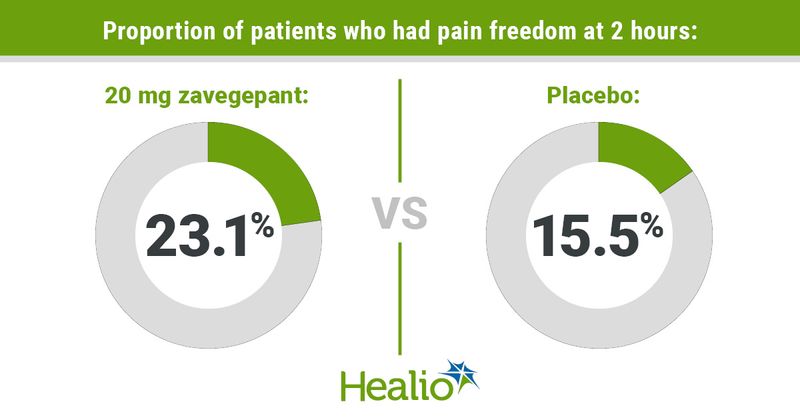Intranasal zavegepant effective for acute migraine treatment
Click Here to Manage Email Alerts
Treatment with 10 mg and 20 mg of intranasal zavegepant met the primary endpoints in a randomized clinical trial — freedom from pain and the most bothersome symptom after 2 hours.
“Zavegepant is an investigational, third-generation, high-affinity, selective and structurally unique small molecule CGRP receptor antagonist,” Robert Croop, MD, chief development officer, neurology, at Biohaven Pharmaceuticals, said during a presentation at the American Headache Society Annual Scientific Meeting, which is being held virtually. “Zavegepant is the only intranasal CGRP receptor antagonist in late-stage development for the acute treatment of migraine.”

Croop and colleagues conducted a double-blind, randomized, dose-ranging, placebo-controlled phase 2/3 trial of intranasal zavegepant. The researchers randomly assigned 1,581 participants (mean age, 40.8 years; 85.5% women) in a 1:1:1:1 ratio to receive either 5 mg, 10 mg or 20 mg zavegepant or placebo.
The proportion of patients with pain freedom at 2 hours was 15.5% in the placebo group, 19.6% in the 5 mg group, 22.5% in the 10 mg group and 23.1% in the 20 mg group. The proportion of patients with most bothersome symptom freedom at 2 hours was 33.7% in the placebo group, 39% in the 5 mg group, 41.9% in the 10 mg group and 42.5% in the 20 mg group.
According to the researchers, zavegepant was well-tolerated and demonstrated a favorable safety profile. The most common adverse events were dysgeusia, nausea and nasal discomfort. The proportion of patients with one or more adverse events was 22.7% in the 5 mg group, 24.6% in the 10 mg group, 31.3% in the 20 mg group and 15.4% in the placebo group.
“Based on these findings, a phase 3 clinical trial has been initiated to evaluate intranasal zavegepant 10 mg vs. placebo in the acute treatment of migraine,” Croop said.

